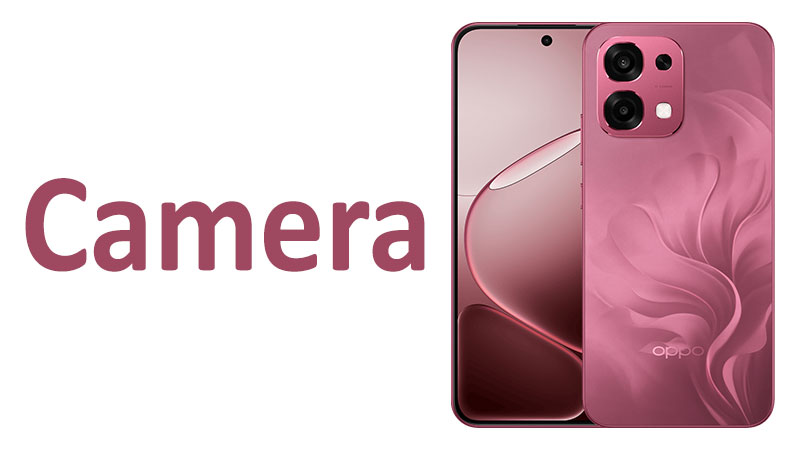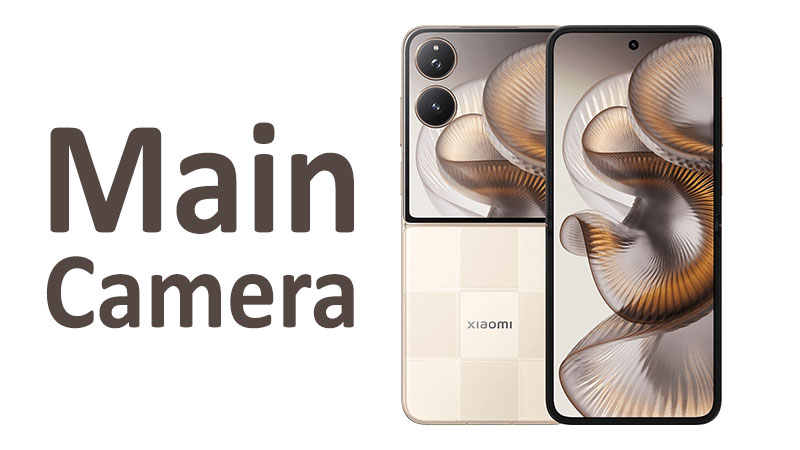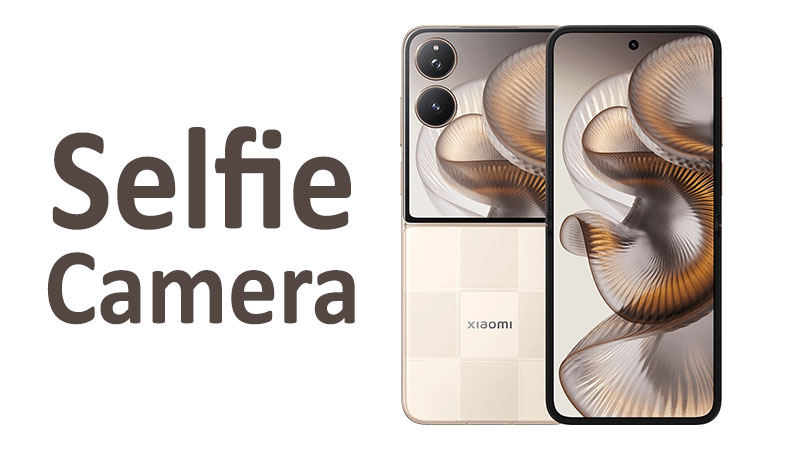The Oppo F31 camera system targets users seeking strong imaging capabilities at an accessible price point effectively. Oppo positions the F-series firmly in the competitive mid-range market constantly. This comprehensive review explores the technical specifications of this new device clearly. We analyze the dual-lens rear camera and the capable front-facing selfie sensor successfully. Understanding the performance of the Oppo F31 camera is essential for any potential buyer readily. We delve into detail capture, video features, and overall user experience thoroughly. Our goal is to provide a complete guide to its photographic strengths and weaknesses overall.
Core Camera Specifications Deep Dive
The Oppo F31 features a dual-camera array on the rear panel consistently. This setup includes one high-resolution primary sensor and one low-resolution secondary sensor effectively. The phone relies on a 50 MP main camera to capture detailed images actively. It pairs this powerful sensor with a dedicated 2 MP depth sensor readily. This specific configuration is highly common in this segment of the smartphone market overall.
The 50MP Primary Wide Sensor
The primary lens is the cornerstone of the Oppo F31 camera performance constantly. It utilizes a large 50 MP sensor for excellent pixel count and high detail capture effectively. The main lens has a wide aperture of f/1.8 actively. This fast aperture is crucial for gathering maximum available light consistently. This design choice directly improves performance, especially in challenging low-light environments readily.
The 50 MP sensor employs Phase Detection Autofocus (PDAF) technology successfully. PDAF is essential for achieving quick and accurate focus in varied shooting conditions constantly. This feature minimizes blur and ensures sharp images, even when subjects are moving effectively. The high resolution allows for decent digital cropping without immediately losing significant image quality overall. This versatility is a major selling point for the F31 camera constantly.
The Dedicated 2MP Depth Sensor
The secondary camera is a humble 2 MP sensor with an aperture of f/2.4 actively. This lens does not capture traditional images for general photography effectively. Instead, its sole purpose is collecting crucial depth information constantly. This depth data creates a precise map of the distance between the foreground and background readily.
The information from the 2 MP depth sensor is instrumental in generating the popular bokeh effect effectively. This effect artistically blurs the background while keeping the main subject sharp and clearly focused overall. This dual-camera setup allows the Oppo F31 to produce compelling and attractive portrait photos consistently. The limited 2 MP resolution is entirely acceptable for this specialized depth-sensing function constantly. It acts as a necessary support element for the main 50 MP camera successfully.
Key Features of the Rear Array
The dual rear camera system includes several standard photographic features readily. It integrates a dedicated LED flash for illuminating subjects in dark surroundings effectively. The phone also supports HDR (High Dynamic Range) image processing actively. HDR helps to balance exposure in scenes with both bright and dark areas overall. It reveals detail that might otherwise be lost in deep shadows or blown-out highlights constantly. Additionally, the camera offers a panorama mode actively. This mode lets users stitch together a series of photos to create wide, expansive landscape images successfully. These features combine to offer a versatile, everyday shooting experience overall.
Video Recording Specifications
The Oppo F31 camera provides versatile video recording options constantly. It supports full HD 1080p resolution at three distinct frame rates effectively. Users can capture standard video at 30 frames per second (fps) readily. They can choose a smoother capture experience at 60fps for fast action constantly. Furthermore, the F31 allows for high-speed video capture at 120fps actively. This 120fps recording is specifically used for creating dramatic slow-motion video clips successfully. This variety ensures flexibility for capturing various types of moments overall. However, the absence of 4K video is a notable limitation in this price category actively.
Specialized Comparisons with Market Rivals
The Oppo F31 camera system fits squarely into the highly competitive mid-range segment actively. Therefore, comparing its specific feature set to its closest rivals is essential readily. We need to evaluate where the F31 makes smart trade-offs and where it lags behind overall.
The Missing Ultrawide Lens Trade-off
Most competitor smartphones in this price bracket typically offer a triple-camera system constantly. This setup usually includes a primary, an ultrawide, and a macro or depth sensor effectively. The Oppo F31 notably opts for a dual-camera system, omitting the dedicated ultrawide lens readily. This is a significant point for users who frequently capture vast landscapes or large interior spaces actively.
Compared to a triple-lens rival, the F31 sacrifices wide-angle versatility for cost efficiency constantly. Instead, it concentrates resources on its powerful 50 MP main sensor successfully. This focused approach ensures the quality of standard shots remains high overall. However, users will miss the option to zoom out and capture a broader perspective actively. They must rely on the panorama feature as a workaround for wide scenes constantly.
Comparison to Previous F-Series Models
Oppo has a history of prioritizing selfie quality in its F-series, often marketed as the “Selfie Expert” effectively. The F31 continues this tradition with a capable 16 MP front camera readily. Previous models, like the F29 or F30, might have featured a dual front camera for wide-angle group selfies constantly. In contrast, the F31 uses a single 16 MP sensor actively.
The F31’s main camera is a clear upgrade in terms of sheer resolution overall. Moving to a 50 MP sensor from a possible 48 MP or 32 MP sensor in a predecessor offers more detail readily. The focus has shifted from specialized front hardware to a highly capable rear primary lens successfully. This indicates a maturity in the F-series camera strategy overall.
Autofocus Technology Versus Rivals
The F31 employs Phase Detection Autofocus (PDAF) on its 50 MP main sensor consistently. This technology is fast, reliable, and perfectly standard for a mid-range phone effectively. However, many higher-end competitors offer more advanced autofocus systems readily. These systems may include Laser AF or sophisticated Dual Pixel PDAF technology actively.
More advanced systems offer superior locking speed and precision, particularly in very low-light scenarios constantly. The Oppo F31 PDAF works perfectly well in good light readily. Therefore, users must accept slightly slower or less reliable focus performance when ambient light levels drop significantly overall. The overall focus speed is perfectly adequate for most users effectively.
Image Performance: Real-World Scenarios
Evaluating the F31 camera requires looking beyond the raw specifications constantly. We must analyze how the phone performs across various common photographic situations actively. The phone delivers solid performance but shows its limitations in specific demanding scenarios readily.
Daylight Photography and Detail
In well-lit, sunny conditions, the Oppo F31 truly shines brightly effectively. The 50 MP sensor captures a remarkable amount of detail constantly. Images are sharp, clear, and possess excellent texture rendering overall. The high pixel count ensures that even distant objects in a landscape retain their structure and clarity actively.
Oppo’s signature color science tends toward vibrant saturation readily. Colors look punchy and appealing, which is generally favorable for social media sharing effectively. The f/1.8 aperture helps manage shutter speed even in slightly overcast conditions constantly. This ensures that photos remain crisp and free from motion blur overall. This strong daylight performance is arguably the biggest strength of the F31 camera system constantly.
Low-Light Performance Analysis
Low-light photography presents the biggest test for any mid-range camera actively. The Oppo F31 performs reasonably well, but it faces inherent challenges constantly. The fast f/1.8 aperture helps to pull in light effectively. However, the camera lacks Optical Image Stabilization (OIS) hardware readily.
The absence of OIS means the phone must rely entirely on software and electronic stabilization actively. This often necessitates faster shutter speeds to prevent blur, which introduces image noise consistently. While Oppo’s software processing applies noise reduction, low-light photos can sometimes appear slightly softer overall. The details in deep shadows tend to get lost more quickly compared to flagship devices effectively. The dedicated LED flash helps in extremely dark, close-range situations constantly.
Portrait Mode and Bokeh Quality
The dedicated 2 MP depth sensor enhances the F31’s portrait capabilities significantly readily. When shooting portraits, the system uses the 50 MP sensor for the image data effectively. The 2 MP sensor provides the necessary depth information constantly. This combination allows the software to generate a precise, realistic depth-of-field effect overall.
The resulting bokeh effect is generally pleasing and natural-looking actively. Edge detection is surprisingly accurate, thanks to the dedicated depth lens constantly. It cleanly separates the subject from the blurred background in most common scenarios effectively. However, complex edges, such as stray hairs or intricate clothing details, can sometimes confuse the software readily. Overall, the portrait mode provides consistent and attractive results for a mid-range device actively.
HDR Functionality and Exposure Balance
The High Dynamic Range (HDR) feature is critical for modern smartphone photography constantly. The Oppo F31 uses multi-frame processing to manage challenging lighting situations effectively. For instance, when shooting a subject against a bright sky, HDR works to balance the exposure overall.
The phone prevents the sky from being overexposed and the subject from appearing as a silhouette readily. The F31 HDR processing is effective but sometimes appears slightly aggressive actively. This can lead to a slight loss of contrast in the final image constantly. However, it successfully ensures that detail is preserved across the entire tonal range in difficult scenes effectively. Users find the automatic HDR setting reliable for everyday use overall.
Video Performance and Slow-Motion
The video specifications of the Oppo F31 place a clear emphasis on high-quality full HD recording actively. The available frame rate options offer versatility, even without the ability to record 4K footage readily.
1080p Resolution Limitations
The maximum video resolution on the main camera is 1080p, or Full HD, at up to 60fps constantly. This resolution is perfectly sufficient for social media sharing and viewing on standard mobile screens effectively. However, it is a clear limitation when compared to rivals that offer 4K recording readily. 4K provides four times the resolution, offering much greater detail and flexibility for editing overall.
Content creators who need to crop or zoom into their footage will feel constrained by the 1080p limit actively. Furthermore, the lack of 4K future-proofs content less effectively. The focus is clearly on capturing smooth, stable HD video rather than extreme resolution constantly.
Frame Rate Flexibility: 60fps and 120fps
The ability to record at 1080p resolution at 60fps is a significant advantage actively. This higher frame rate captures motion with superior smoothness compared to the standard 30fps readily. This is ideal for recording sports, pets, or any quickly moving subject effectively. The footage looks fluid and professional when played back at normal speed constantly.
Additionally, the 120fps recording capability is dedicated to slow-motion effects effectively. Playing 120fps footage back at 30fps results in a four-times slow-motion effect successfully. This allows users to capture dramatic, detailed clips of actions like water splashing or an object dropping constantly. The F31 delivers strong creative options through these flexible frame rate settings overall.
Video Stabilization (EIS)
Since the Oppo F31 lacks hardware OIS, it relies on Electronic Image Stabilization (EIS) for video effectively. EIS uses software to analyze the video frames and digitally compensate for camera shake actively. This system works quite well for reducing minor jitters and hand tremors constantly.
However, EIS can sometimes introduce a slight crop or “jelly” effect when movement is severe readily. For casual, handheld video, the stabilization is more than adequate successfully. Users attempting walking or running shots may notice the inherent limitations of software stabilization overall. The F31 provides stable, good-quality 1080p footage for the average user consistently.
Selfie Camera Review: A Front-Facing Focus
Oppo has a historical reputation for prioritizing the quality of its front-facing cameras consistently. The Oppo F31 continues this trend with a very capable 16 MP selfie sensor actively.
16MP Sensor and Aperture
The front-facing camera features a 16 MP resolution with a wide f/2.4 aperture readily. This resolution ensures that selfies capture plenty of fine detail effectively. The f/2.4 aperture is tighter than the main rear lens, which is common for front cameras constantly. This tighter aperture is adequate for well-lit conditions but will struggle more in low light overall.
The front sensor is a wide-angle lens, which is perfect for capturing group selfies successfully. It ensures everyone fits comfortably within the frame without extreme distortion actively. The focus here is on producing bright, detailed images that are ready for immediate sharing constantly.
Selfie Features and Portrait Effects
The front camera supports a panorama feature, allowing users to take wide group photos or environmental selfies readily. This feature is particularly useful for maximizing the number of people or background elements in the shot effectively. Furthermore, Oppo’s software provides robust portrait effects and beauty modes actively.
These software-driven effects accurately blur the background using facial recognition and machine learning constantly. While it lacks a dedicated depth sensor on the front, the 16 MP sensor and AI processing create high-quality, professional-looking portrait selfies successfully. The beauty modes can be customized to enhance skin tones and features subtly overall.
Front Camera Video Limitations
The front camera’s video recording is limited to 1080p resolution at 30fps constantly. This is the standard quality for video calls and quick front-facing video clips effectively. It lacks the higher 60fps and slow-motion options available on the rear camera readily. This constraint reinforces the idea that the F31 prioritizes still photography over professional-grade front-facing video content creation overall. For vlogging, users should still consider utilizing the much more powerful main rear camera consistently.
Pros, Cons, and Final Buyer’s Guide
Evaluating the Oppo F31 camera system requires balancing its impressive strengths against its clear limitations effectively. This summary helps potential buyers make an informed choice based on their specific needs readily.
Key Strengths (Pros)
The camera boasts a high-resolution 50 MP main sensor that delivers excellent detail in daylight actively. The fast f/1.8 aperture is effective for light gathering and managing exposure consistently. A dedicated 2 MP depth sensor ensures high-quality, realistic portrait mode bokeh effects readily. The phone offers flexible 1080p video recording at 30fps, 60fps, and 120fps for slow-motion creatively. The 16 MP selfie camera provides high-detail, well-exposed self-portraits effectively.
Potential Limitations (Cons)
The system lacks a versatile ultrawide lens, limiting its capability for expansive scene capture overall. The phone cannot record in 4K resolution, which is a disadvantage against many market rivals actively. The absence of hardware OIS leads to softer, noisier results in challenging low-light conditions constantly. The front camera’s video is limited to only 1080p at 30fps, restricting vlogging options effectively.
Essential Buying Considerations
You should evaluate your primary photographic needs before committing to the Oppo F31 readily. If your main priority is taking crisp, vibrant photos in daylight, the 50 MP sensor is a fantastic choice actively. If you frequently rely on portrait mode for friends and family, the dedicated depth sensor ensures consistent results overall.
However, if you are a traveler who needs to capture wide landscapes, or if you plan to edit and share 4K video, this phone is not the best option constantly. Buyers should also accept the limitations of low-light shooting without OIS effectively. The Oppo F31 is ideally suited for the casual user who values great daylight photography and superior selfies at a reasonable cost overall.
Conclusion
The Oppo F31 camera system is a strong contender in the crowded upper-mid-range smartphone category actively. It makes a strategic decision to focus on quality over sheer lens quantity consistently. The powerful 50 MP main sensor delivers remarkable detail and vibrant colors in good lighting effectively. The dedicated 2 MP depth sensor ensures that portrait photos stand out beautifully readily.
While the lack of an ultrawide lens and the absence of 4K video recording are noticeable drawbacks, the F31 compensates with excellent high-frame-rate 1080p options and a high-resolution 16 MP selfie camera overall. This phone is designed for the user who prioritizes strong, everyday photo quality and high-quality self-portraits consistently. The Oppo F31 is a smart choice for casual photographers who seek reliability and excellent value actively. It is a capable device that successfully meets the demands of social media and daily memory capture overall.
FAQ
Does the Oppo F31 main camera have an ultrawide lens?
No, the Oppo F31 uses a dual-camera system and does not include a dedicated ultrawide lens actively.
What is the maximum video resolution available on the rear camera?
The rear camera’s maximum resolution for video recording is 1080p Full HD, available at up to 120fps effectively.
Does the Oppo F31 camera include Optical Image Stabilization (OIS)?
No, the F31 does not have OIS; it relies instead on Electronic Image Stabilization (EIS) for video actively.
What is the purpose of the 2 MP sensor on the rear of the phone?
The 2 MP sensor is a depth sensor used exclusively to create the artistic bokeh effect in portrait mode readily.
What is the resolution of the front-facing selfie camera?
The selfie camera on the Oppo F31 uses a 16 MP sensor for capturing high-detail self-portraits consistently.



